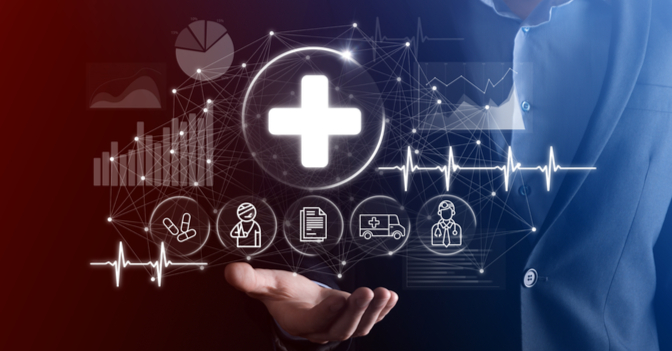For decades, life sciences companies have retained physicians and other healthcare professionals (HCPs) as key opinion leaders, or KOLs, to share their expertise by presenting at conferences, serving on advisory boards, and providing consulting services. More recently, pharmaceutical, medical device, and biotechnology companies have been engaging with digital opinion leaders, or DOLs, to amplify content in new ways.
The manner in which life sciences companies compensate KOLs and DOLs for their services is evolving, with the value of their services depending on how KOLs and DOLs engage with intended audiences. With this evolution comes new challenges in ensuring financial arrangements meet regulatory requirements.
Specifically, regulations like the Anti-Kickback Statute and the Open Payments Program aim to ensure such arrangements do not induce or reward product referrals. Further, hospitals and health systems that employ or contract with HCPs should be aware—and take heed—if any of the HCPs also receive remuneration for serving as KOLs or DOLs, given the potential for conflicts of interest and the possibility that payment for services could influence clinical decision-making or otherwise impact patient care. Running afoul of regulatory and/or policy requirements not only presents compliance risk but also reputational risk to a hospital or health system.
What Differentiates KOLs and DOLs?
Traditionally, life sciences companies have contracted with HCPs who are nationally recognized experts in their fields to serve as KOLs. For their work, KOLs usually are compensated based on effort and time (e.g., number of hours involved in presenting at a conference or serving on an advisory board) at an hourly rate that represents fair market value (FMV).
Like KOLs, DOLs are recognized experts engaged by life sciences companies to guide, create, and/or present educational content and to share research findings. Unlike KOLs, however, DOLs share their influence online, making them uniquely valuable to life sciences companies. Thus, the methods used to determine fair market value for KOLs’ services do not fully capture DOLs’ value.
By leveraging social media, DOLs have the power to influence millions of followers, not just a handful of conference attendees. According to a 2024 survey published by Sermo and LiveWorld, Inc., nearly 70% of HCPs engage with influencer content on social media daily, including clinical trial data, treatment guidelines, and patient support materials.
How is KOL and DOL Compensation Determined?
As noted previously, KOLs’ compensation typically is based on time multiplied by rate. Compensable time can be measured in different units (e.g., hourly, half- or full day) and may include preparation and travel as defined by company policy.
To determine an appropriate rate, one should consider multiple valuation approaches, most notably the market and cost approaches: what a KOL would be paid for similarly situated services in the market and what the cost to replace or reproduce the service would be, respectively. While databases that aggregate compensation, including the Open Payments dataset, include some market data, often the availability and comparability of market data may be limited.
For example, an entry in the Open Payments dataset often will list total compensation paid to an HCP but not specify the time spent by the HCP in rendering the service. Without this information, one cannot effectively evaluate the reasonableness of the hourly rate. Alternatively, one may determine the investment required to engage a KOL by starting with available and applicable industry survey benchmark data. Such data review may be followed by inclusion of other direct costs (i.e., an allocation for reasonable benefits) and consideration of other appropriate factors not reflected in survey benchmark data per se (e.g., HCP specialty supply and demand and services that require unusual subspecialty knowledge).
While some work performed by DOLs is inherently time-based (e.g., content creation), DOL compensation is tied primarily to social media metrics:
- Reach (number and relevance of followers)
- Engagement (interaction with content)
- Follower growth rate (increase in the number of relevant followers over time)
- Earned media activity (recommendations or mentions)
- Social media platform utilized (e.g., LinkedIn, Instagram, YouTube)
By way of example, a DOL with an expanding reach of relevant followers whose educational content is recommended by others would warrant higher compensation than a DOL with similar content but a smaller or less engaged reach. Once appropriate metrics are identified, they can be calculated, compared to industry standards (such as those in this Hootsuite study, which cites engagement rates for the healthcare, pharmaceutical, and biotech industries), and ascribed a value that reflects effort attributable to content creation and the impact of reach and relevance.
What are Compliance Considerations?
When a DOL receives remuneration to promote a product or service through social media posts sponsored by a company, the Federal Trade Commission requires the DOL to disclose the same to ensure transparency and avoid misleading consumers. Such disclosures must be written in plain language and prominently placed on the DOL’s social media.
Additionally, several states (Connecticut, Massachusetts, Minnesota, Nevada, Oregon, and Vermont, as well as Washington D.C.) have also enacted legislation requiring the disclosure of payments and other transfers of value between HCPs and life sciences organizations. These states’ reporting requirements vary, so organizations should continually track financial arrangements with DOLs.
PYA actively monitors the latest developments in KOL and DOL compensation and compliance, and we can assist you in determining the fair market value compensation and commercial reasonableness of engaging physicians and other HCPs in these roles. To learn more, contact our executives.






